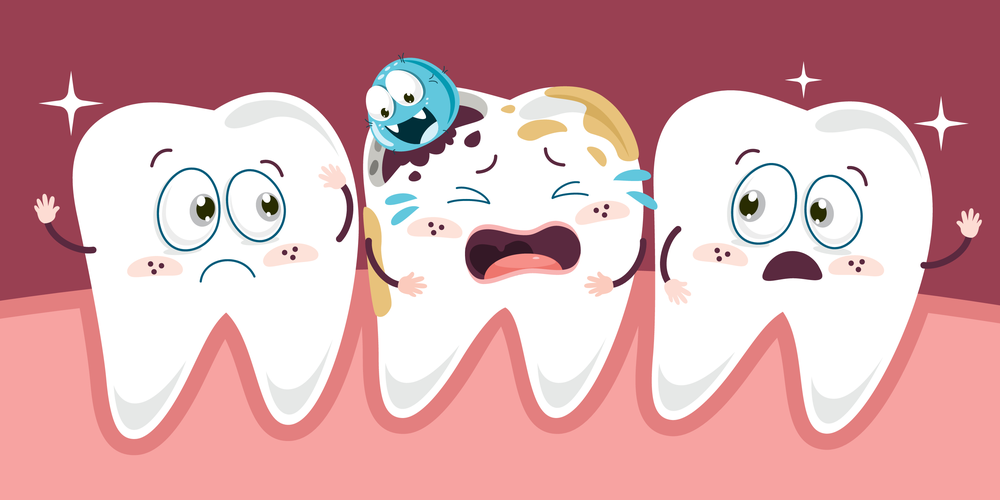By spreading knowledge of how tooth decay progresses, more people are able to see the signs and symptoms of tooth decay before they become a serious problem. In fact, more of our patients have shown better preventative care habits such as brushing their teeth and flossing regularly. In fact, these habits when combined with regular dental checkups, dental cleanings, and better eating habits can greatly impact the brightness, health, and confidence of your smile.

In today’s dental article we want to review how tooth decay happens and what signs you should look for on a daily basis to ensure that your teeth and gums don’t deteriorate. The best way to prevent tooth decay from progressing out of hand is to catch it early.
Phase 1: Bacteria growth
Just like periodontal disease and a number of other dental concerns, decay begins with harmful bacteria that have found refuge within the mouth and begun weakening your otherwise healthy structures. It is true that they are present within every grin and attempting to rid them all is virtually impossible, you can take strides to up your preventive care routine to try and keep them at bay.
Oral bacteria thrive in the hard-to-clean areas of the mouth such as the gums, back molars, and in-between structures. Once they have nestled into an area for protection, they begin to feed off of the food particles and sugar you consume, resulting in the releasing of harmful acids that catalyze the process of breaking down your teeth. Once this has gone on for some time, a hole begins to form known as a cavity.
Cavities are one of the earliest stages of decay, and can often be treated with a dental filling. The process involves removing the infected portions of the structure, then filling the opening with the composite material. If you do not act with efficiency, however, this option may fail and you may need to seek another alternative.
Phase 2: Decay spreads to the inner pulp
When decay spreads, it moves from the outside of a structure inwards. This means that the inner dental pulp and nerves are next to fall victim to decay. During this stage, you will begin to experience sharp pains and sensitivity, as well as difficulty with certain functions. Your dentist may also recommend treatment at his point with a root canal procedure in order to remove the infection from within, as well as attempt to save your natural tooth.
Phase 3: Loss of the structure.
If the infection continues to progress, there is not much restoration can do at this point, and your only viable option is likely extraction. Removing a compromised tooth can benefit your surrounding teeth, but can also cause some difficulties with oral function. Because of this, your dentist will likely recommend seeking an implant to fill the gap.
Continue Learning About Tooth Decay
For more information about the progression of tooth decay check out more articles on tooth decay, testimonials from our patients, or you can schedule your appointment with our team at Pickett Family Dental in Keller, TX by calling (817) 431-5514 today.



